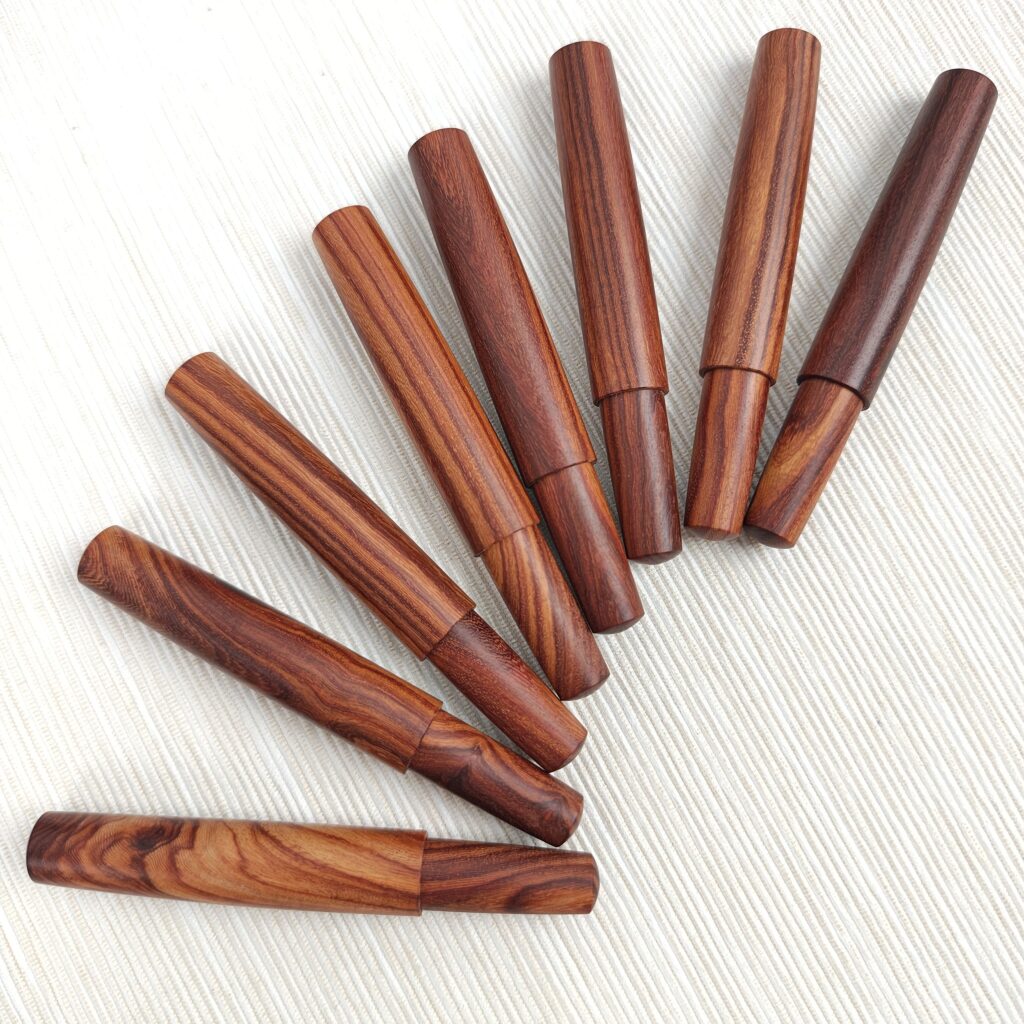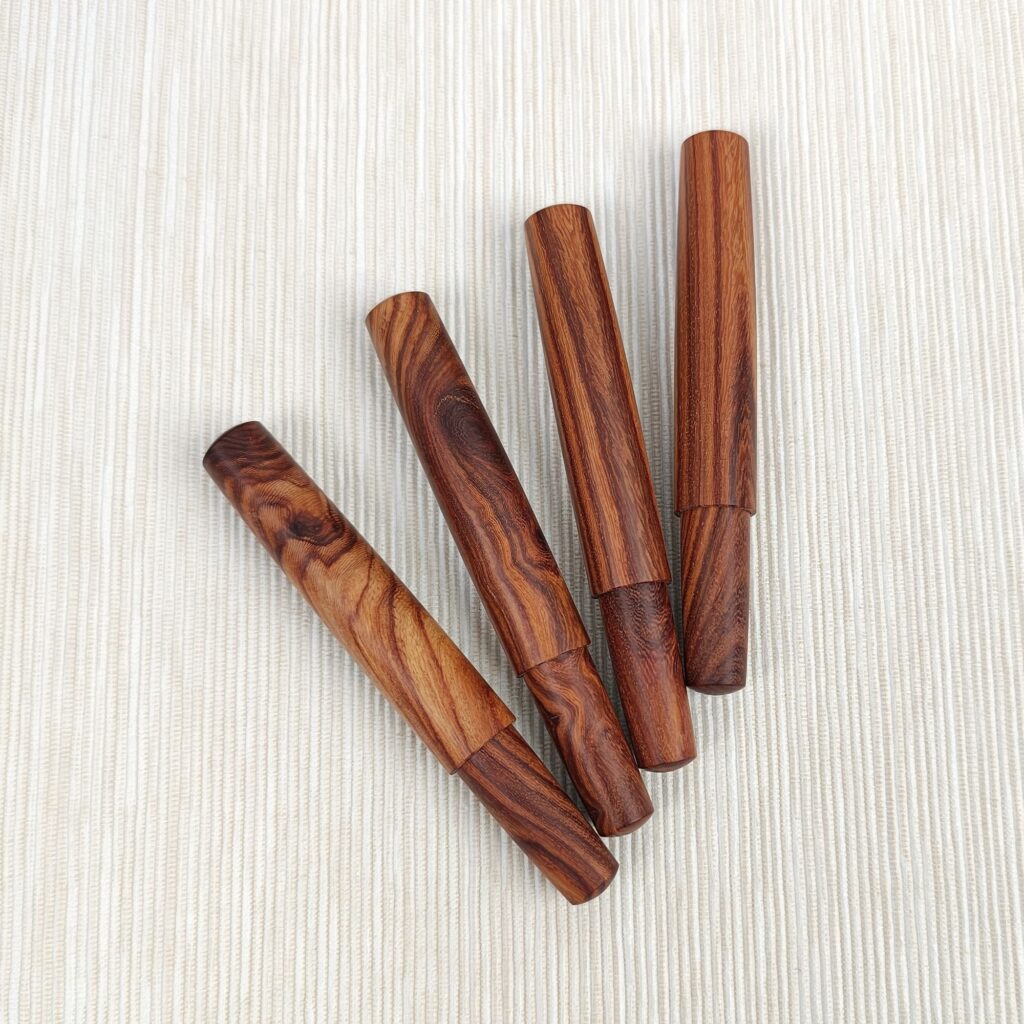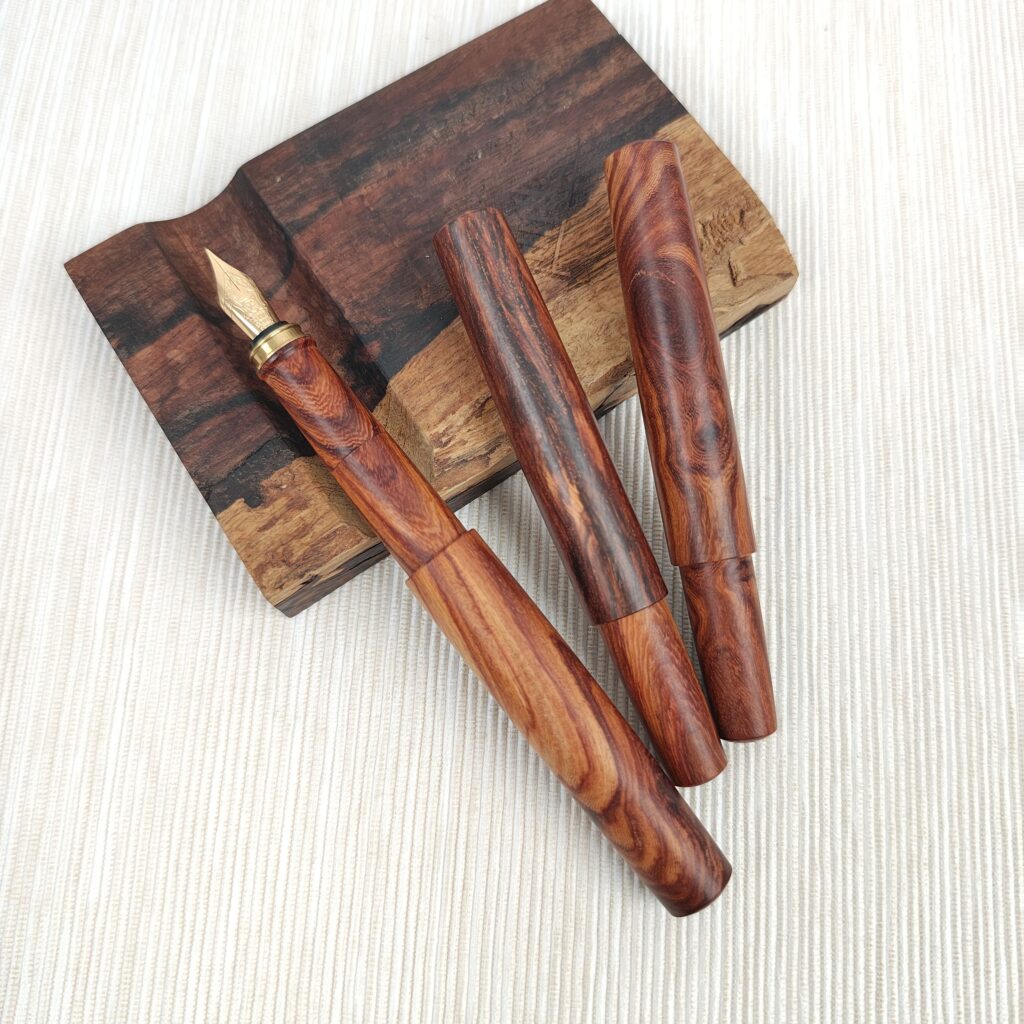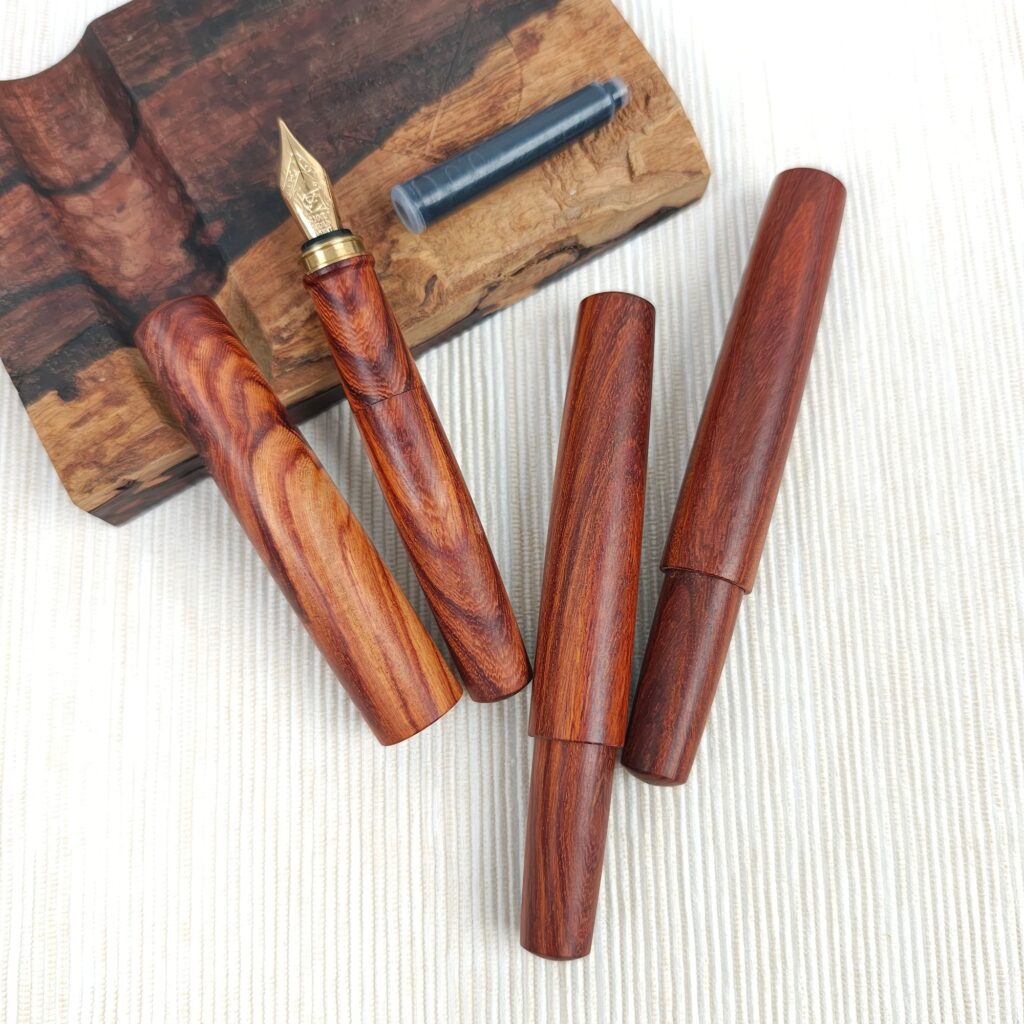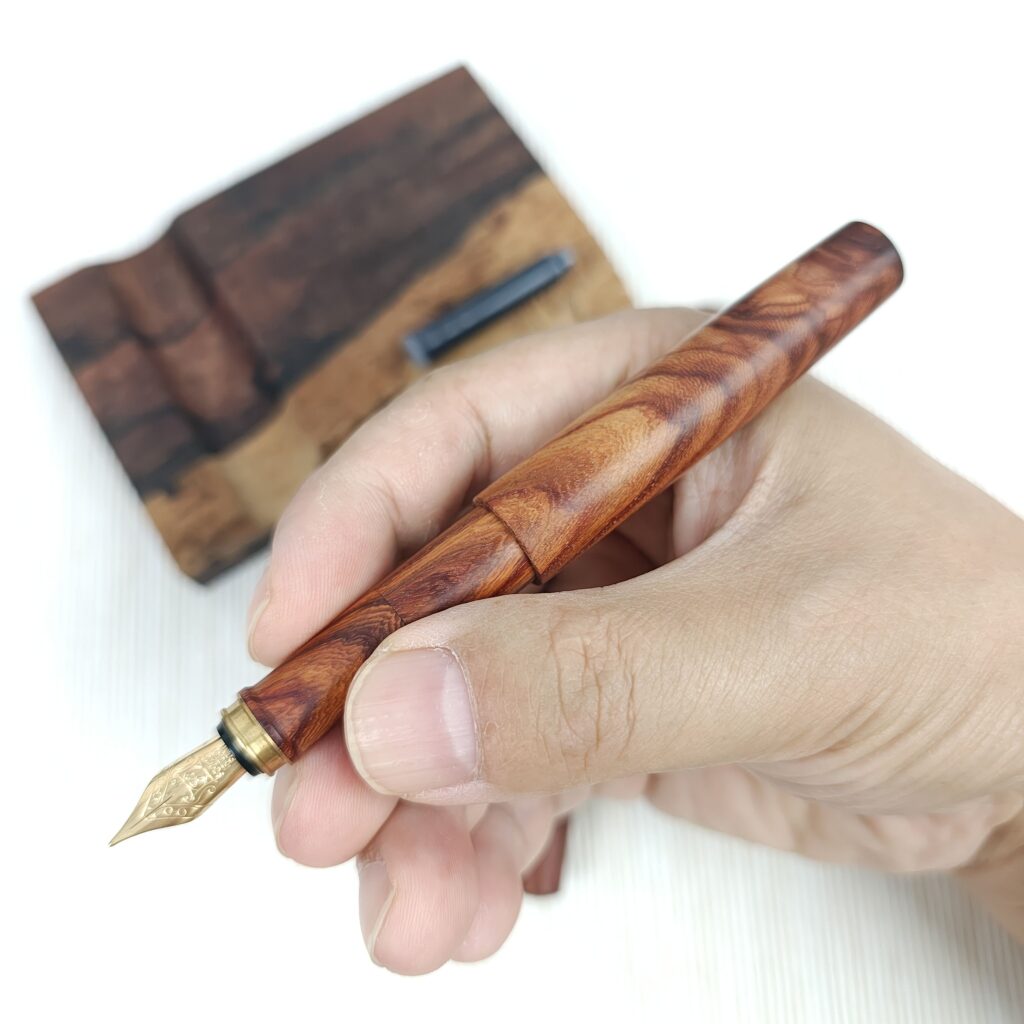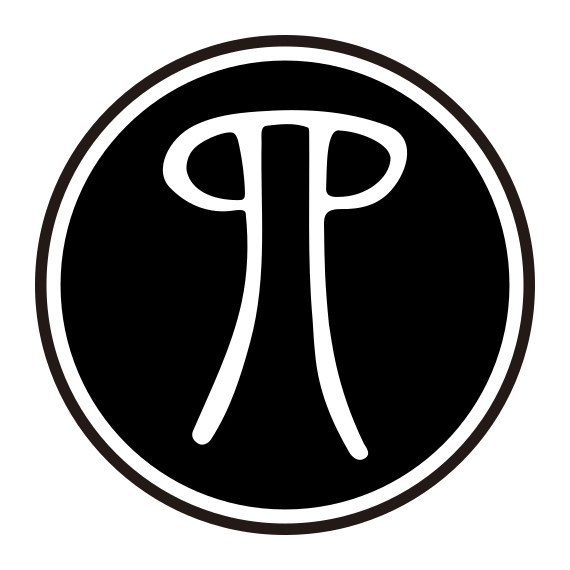Every time I cut into a piece of red pterocarpus, I never know exactly what I’m going to get. That’s both the challenge and the magic of working with this wood.
Why Red Pterocarpus Stands Out
Here’s what makes this wood special:
Red pterocarpus has been prized in Chinese furniture making for centuries – there’s a reason it’s called “red sandalwood.” But what really sets it apart for fountain pen making is the incredible variety in grain patterns. No two pieces look alike, and that’s entirely the point.
Unlike woods with consistent patterns, red pterocarpus shows you its personality. Some pieces are subtle and refined, others are bold and dramatic. A few rare pieces even surprise you with contrasting sapwood that creates natural artwork.
Three Distinct Looks – Same Premium Wood
All red pterocarpus comes from the same tree species, but each piece tells a different visual story:
Fine Grain: The Elegant Choice
[Referring to the first image you showed – the subtle, fine-grained pieces]
These pieces have delicate, closely-spaced grain lines that flow smoothly along the pen barrel. The overall appearance is rich reddish-brown with subtle darker streaks.
Perfect if you want:
- Understated sophistication
- Professional appearance in any setting
- Classic beauty that won’t distract from your writing
- Consistent, refined look
Bold Grain: The Statement Maker
[Referring to the second image – the dramatic grain patterns]
These pieces showcase pronounced, sweeping grain patterns with strong contrast between light and dark areas. The grain becomes part of the pen’s character – bold, confident, eye-catching.
Choose this if you:
- Appreciate dramatic natural patterns
- Want a pen that starts conversations
- Like the idea of wood grain as natural artwork
- Prefer unique over uniform
Sapwood Edge: The Rare Find
[Referring to the third image – the pieces with light sapwood contrast]
These are the rarest pieces – where we include some of the tree’s outer sapwood along with the heartwood. You get striking contrast between the pale, creamy sapwood and the deep red heartwood.
These special pieces are for people who:
- Want something truly one-of-a-kind
- Appreciate natural wood’s full story
- Don’t mind (or prefer) bold visual contrast
- Understand that sapwood pieces are genuinely scarce
What This Means When You’re Writing
Regardless of which grain pattern you choose, red pterocarpus delivers:
The Feel
Red pterocarpus has a warm, smooth texture that feels comfortable in your hand. It’s dense enough to feel substantial but not so heavy that it tires you during long writing sessions. The natural oils in the wood give it a pleasant, almost silky feel.
The Durability
This is furniture-grade hardwood – the same material used in high-end Chinese furniture for centuries. It doesn’t dent easily, resists wear, and actually looks better with age as the natural oils develop a subtle patina.
The Character Development
Unlike some woods that change dramatically over time, red pterocarpus matures gracefully. The colors deepen slightly, and the natural oils create a richer surface feel, but the fundamental character remains consistent.
Choosing Your Grain Pattern
Here’s the honest breakdown:
Fine Grain:
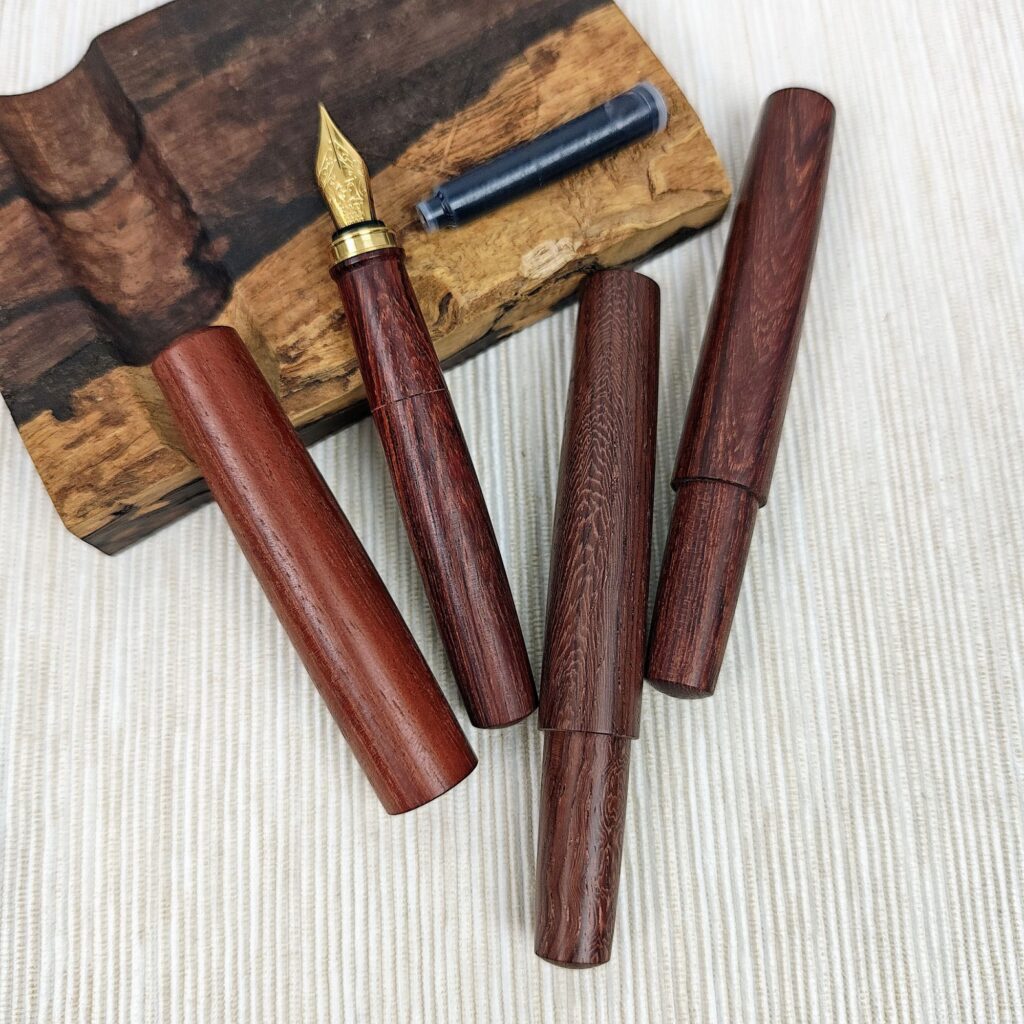
- Most versatile – works in any setting
- Easier to photograph (if that matters to you)
- Appeals to people who prefer subtle beauty
- Generally more available
Bold Grain:
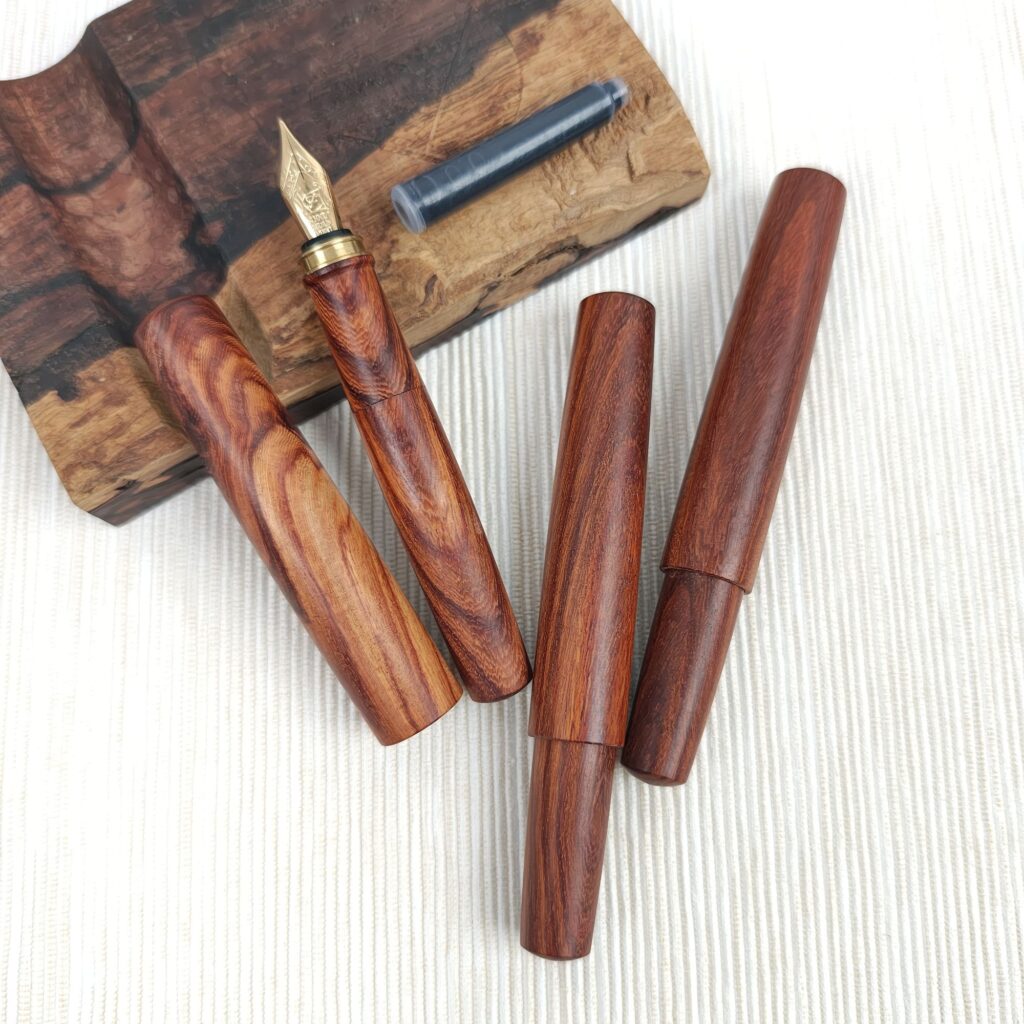
- More dramatic and unique
- Better conversation starter
- Appeals to people who like strong visual patterns
- Each piece is completely individual
Sapwood Edge:
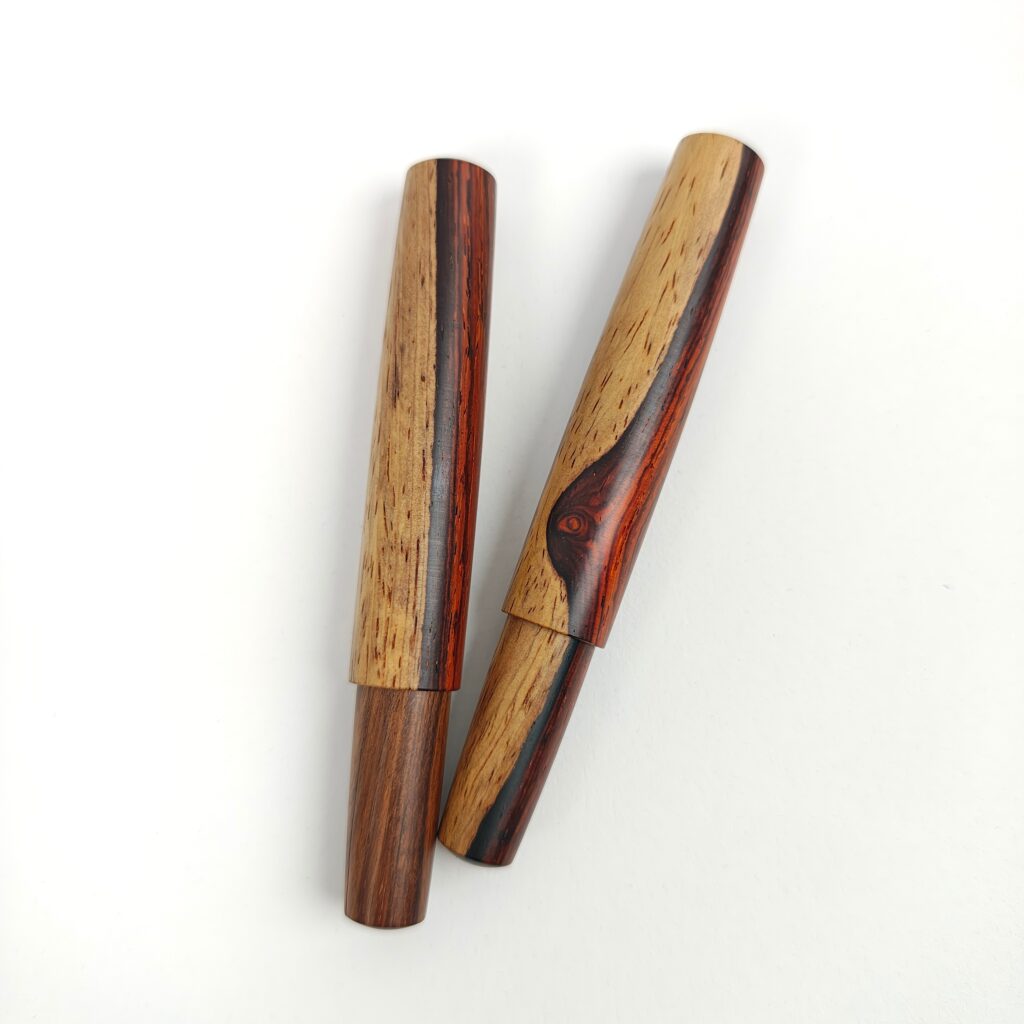
- Genuinely rare – maybe 5% of pieces have good sapwood contrast
- Most unique option available
- Higher visual impact than pure heartwood
- Not for everyone, but unforgettable for those who love it
The Reality About Working with Red Pterocarpus
Let me be straight about the challenges:
This wood can be unpredictable during crafting. The varying grain density means each piece responds differently to CNC machining. Some pieces cut like butter, others require careful attention to prevent tearout.
But that unpredictability is also what makes each pen unique. I hand-select every piece to ensure the grain pattern works well for a fountain pen’s proportions.
How It Compares to Our Other Woods
Red pterocarpus offers something different:
- More visual variety than ebony’s consistency
- Warmer colors than most other premium woods
- Traditional Chinese heritage that appeals to certain collectors
- Three distinct looks from the same wood species
Each material we work with has its place – red pterocarpus is for people who want their pen to have visible character and story.
Caring for Your Red Pterocarpus Pen
Good news: it’s low-maintenance.
- Simple cleaning – just wipe with a soft cloth
- No special oils needed – the wood maintains itself
- Avoid soaking – like any fine wood, don’t submerge it
- Room temperature storage – no special requirements
The natural oils in the wood actually help protect it, so maintenance is minimal.
Is Red Pterocarpus Right for You?
You’ll love it if:
- You appreciate visible wood grain and natural variation
- You want a pen with traditional Chinese woodworking heritage
- You like the idea that your pen looks different from everyone else’s
- You don’t mind (or prefer) that people notice your writing instrument
Consider other options if:
- You prefer completely uniform appearance
- You want the most budget-friendly choice
- You like materials that change dramatically over time
- You prefer woods with strong natural fragrance
The Bottom Line
Red pterocarpus isn’t about perfection – it’s about character.
When I hand someone their first red pterocarpus pen, they usually run their fingers along the grain pattern first. The wood grain becomes part of the writing experience – it’s something you notice and appreciate every time you pick up the pen.
The variety is the point. Whether you choose fine grain elegance, bold grain drama, or the rare sapwood contrast, you’re getting a pen that tells a visual story every time you write.
Ready to see our red pterocarpus collection? [Browse red pterocarpus pens →]
Common Questions About Red Pterocarpus Fountain Pens:
Q: Is the sapwood (light edge) as durable as the heartwood (dark center)?
A: Yes, it’s from the same tree. Sapwood is actually slightly less dense, which can make it feel marginally different to the touch, but durability is comparable.
Q: Can I choose the specific grain pattern I prefer?
A: For bold grain and sapwood pieces, I hand-select based on pattern quality. Fine grain pieces have more consistent appearance, so specific selection is less critical.
Q: Will the grain pattern change over time?
A: The colors will deepen slightly and develop more richness, but the fundamental grain pattern remains the same throughout the pen’s life.
Q: Why are sapwood pieces more rare?
A: Most red pterocarpus processing removes the sapwood during lumber preparation. Finding pieces with attractive, usable sapwood requires sourcing specifically for that purpose.
